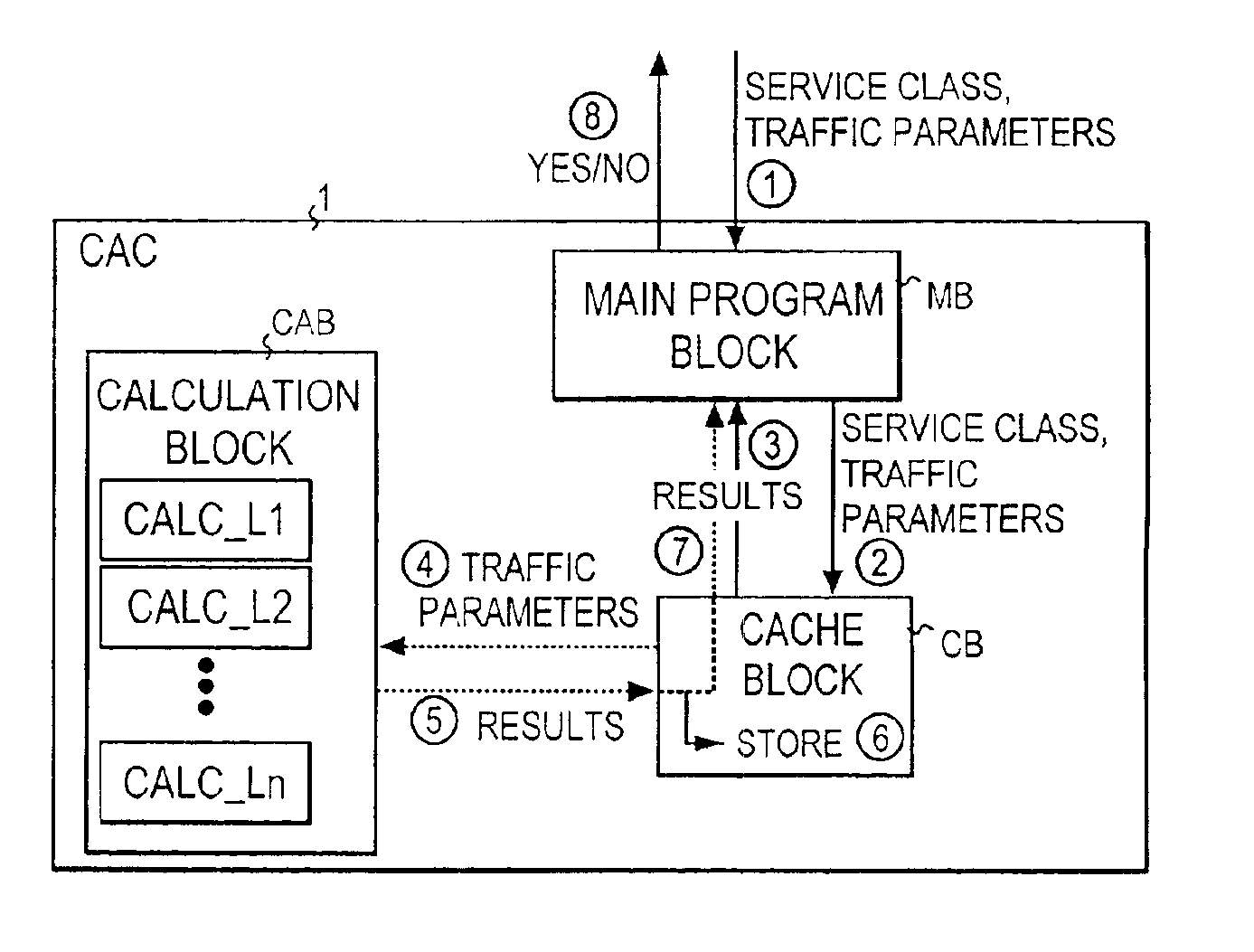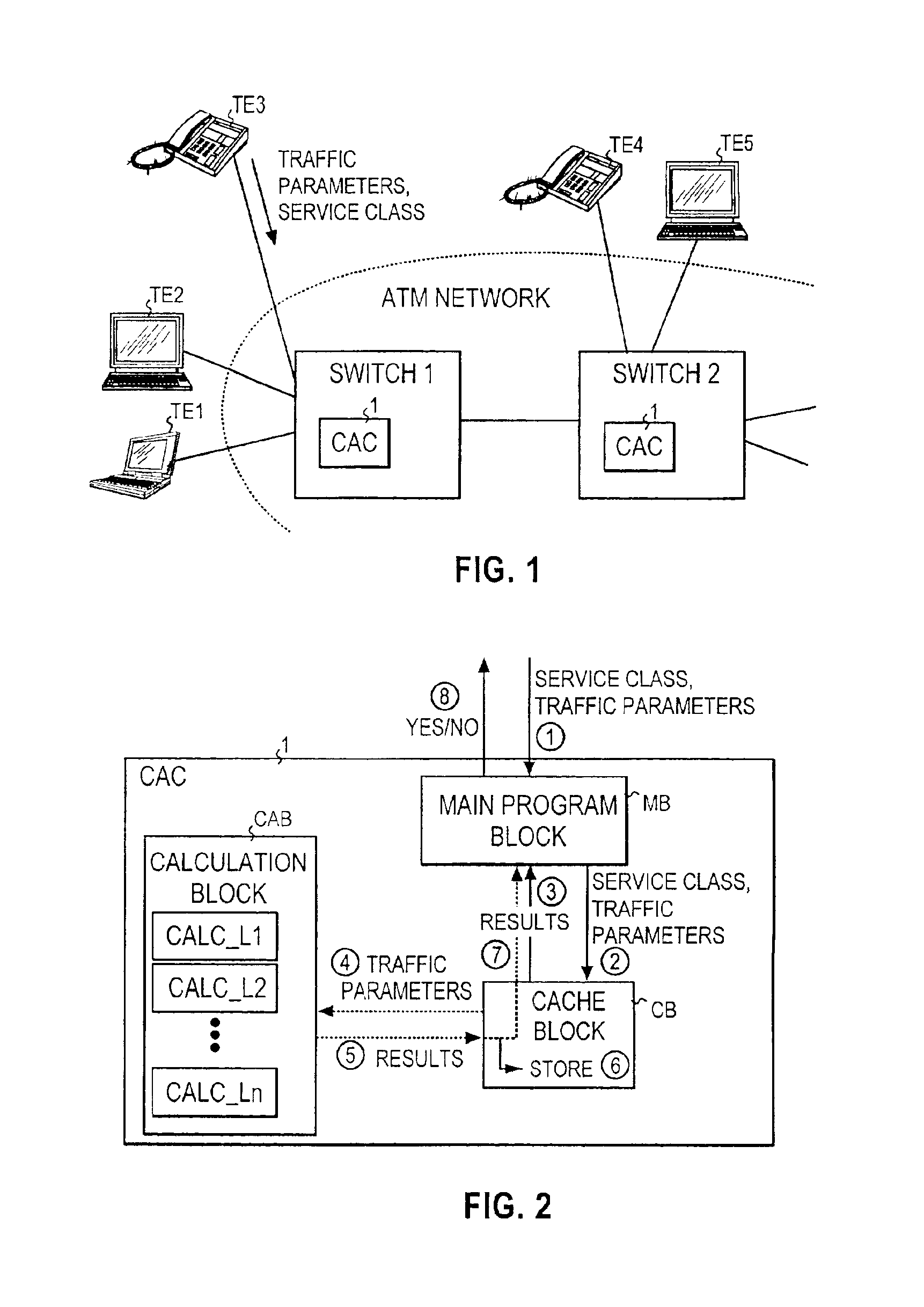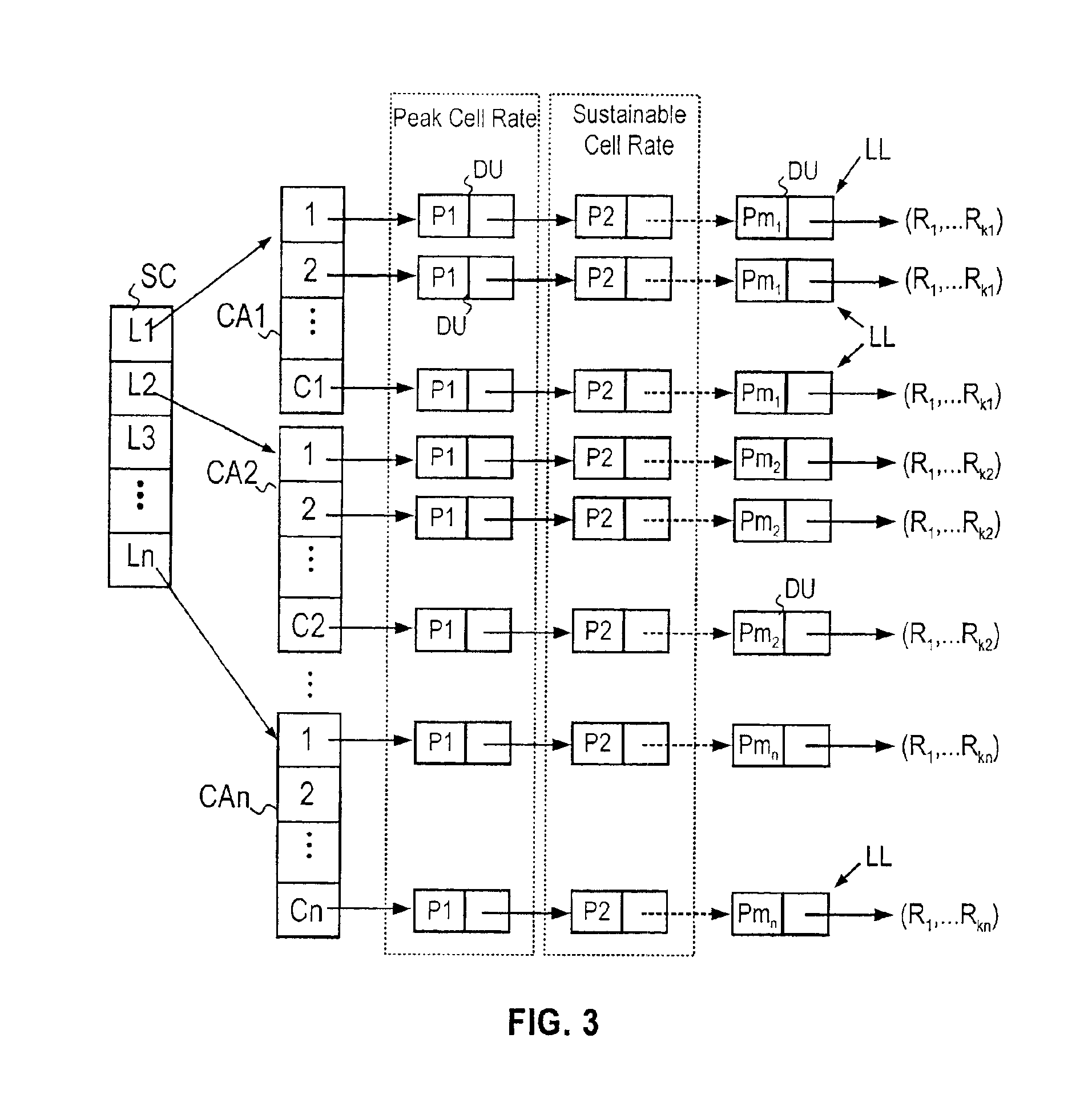Connection admission in a communications network
a technology of communication network and admission control, applied in data switching networks, frequency-division multiplexes, instruments, etc., can solve the problems of high transmission capacity required at some moment, low capacity required at another moment, source burst, etc., and achieve significant acceleration of cac decision-making and speed up of decision-making.
- Summary
- Abstract
- Description
- Claims
- Application Information
AI Technical Summary
Benefits of technology
Problems solved by technology
Method used
Image
Examples
Embodiment Construction
[0024]ATM Forum has specified five different service classes which relate traffic characteristics and the quality of service requirements to network behavior. These service classes are: constant bit rate (CBR), real-time variable bit rate (rt-VBR), non-real time variable bit rate (nrt-VBR), available bit rate (ABR), and unspecified bit rate (UBR). Each class represents connections which have homogeneous traffic pattern characteristics and QoS requirements. The above-mentioned traffic parameters are used, together with what are termed QoS parameters, to define the service classes. The QoS parameters are: Cell Delay Variation (CDV), Maximum Cell Transfer Delay (Max CTD), and Cell Loss Ratio (CLR).
[0025]FIG. 1 illustrates an example of the network environment in which the present invention can be implemented. The network comprises a plurality of interconnected (ATM) switches having CAC units (1) which implement the CAC procedure described above. Thus, the CAC units ensure that a connec...
PUM
 Login to View More
Login to View More Abstract
Description
Claims
Application Information
 Login to View More
Login to View More - R&D
- Intellectual Property
- Life Sciences
- Materials
- Tech Scout
- Unparalleled Data Quality
- Higher Quality Content
- 60% Fewer Hallucinations
Browse by: Latest US Patents, China's latest patents, Technical Efficacy Thesaurus, Application Domain, Technology Topic, Popular Technical Reports.
© 2025 PatSnap. All rights reserved.Legal|Privacy policy|Modern Slavery Act Transparency Statement|Sitemap|About US| Contact US: help@patsnap.com



